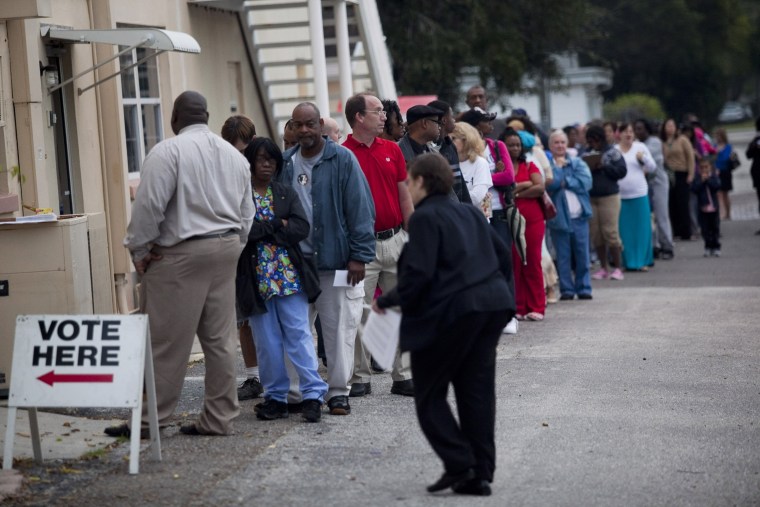This year’s voters are diverse, young and unusually divided, according to national exit polls.
Overall, the 2012 electorate that voted for Obama looked quite similar to 2008, with high turnout among minorities and young people, although voters were distinctly polarized along racial lines.
About three out of four of all voters were white, according to national exit polls, matching the turnout from 2008. Obama’s support among white voters fell to 39%, however, a four-point drop from his first presidential run.
In fact, the 39% figure is lower than the share of white voters won by John Kerry or Al Gore—suggesting an electorate that is now more polarized along racial lines than in several recent campaigns.
And in a year when Democrats cast GOP positions on abortion, rape and medical care as a “war on women,” Obama lost white women by 14 points, double the deficit from 2008, when he lost the same group to McCain by seven points.
The same polarized dynamic was evident in the overwhelmingly lopsided support for Obama among racial minorities this year.
Obama beat Romney by 40 points among Latinos—a margin that eclipsed Obama’s 2008 edge in that group by 3 points. The lead was especially pivotal because Latino turnout is growing nationwide, jumping 25% from 2004 to this year, when one out of 10 voters were Latino.
African-American voters matched their above-average turnout of 13% in 2008. Obama’s support among African-Americans held strong, dropping just two points from 2008 to 93%. (That figure reflects a longtime loyalty to the Democratic Party, a trend that held steady before the election of a black president.) Meanwhile, among Asian-Americans, who made up 3% of the electorate, Obama won by a staggering 49 points.
According to one veteran Democratic campaign operative, these racial divisions predate Obama and will endure well beyond his presidency.
This year’s voting patterns “would largely be the same for a white Democratic President,” argued the operative, who didn’t want to speak on the record about racial polarization on election night.
Democrats have certainly struggled to win white voters in national elections since the civil rights era, a fissure that only began to hurt the GOP as the electorate grew more diverse. At the same time, however, during Obama’s first term many Republicans intensified a focus on fraught racial issues, from cracking down on immigrants in Arizona to championing “self-deportation” to questioning President Obama’s religion and country of birth. Those decisions seemed to directly exacerbate an already polarized electorate, in addition to the unavoidable attrition of some white independent voters who would sour on any incumbent president in a recession.
In a demographic twist confounding many political predictions, the nation’s youngest voters, including first-time voters, actually formed a slightly larger share of the electorate compared to 2008. Voters under 25-years-old made up 11% of the pie, up one point from last cycle, while the share of voters between 30 and 50 fell. The youth voting bloc boosted Obama, who led Romney among twenty-somethings by 22 points. Still, that edge marks a significant improvement for Republicans among young people, since McCain lost the same cohort by 34 points.
When it comes to political labels, Romney won self-described independents by 5 points. More voters identified as Democrats (37 %), however, than Republicans (33%) or Independents (30%). That finding settles one recurring dispute from the campaign—whether polls showing more Democrats were somehow “skewed” or biased. In fact, a popular candidate often leads more people to identify with that party, while a less popular standard-bearer can move some would-be Republicans into remission as Independents.
In a race that all sides agreed was about jobs and the recession, Obama did best among the 41% of voters making under $50,000 a year, with a 20-point lead, while Romney did better among wealthier voters. Among the 28% of voters making more than $100,000 per year, Romney won by eleven points.
All these figures are based on national exit polls, which pollsters gather by questioning people after they cast their ballots. In order to accurately reflect the entire voting public, exit pollsters contact voters when they walk out of polling locations on Election Day, and they reach voters who cast early ballots by contacting them via telephone.
